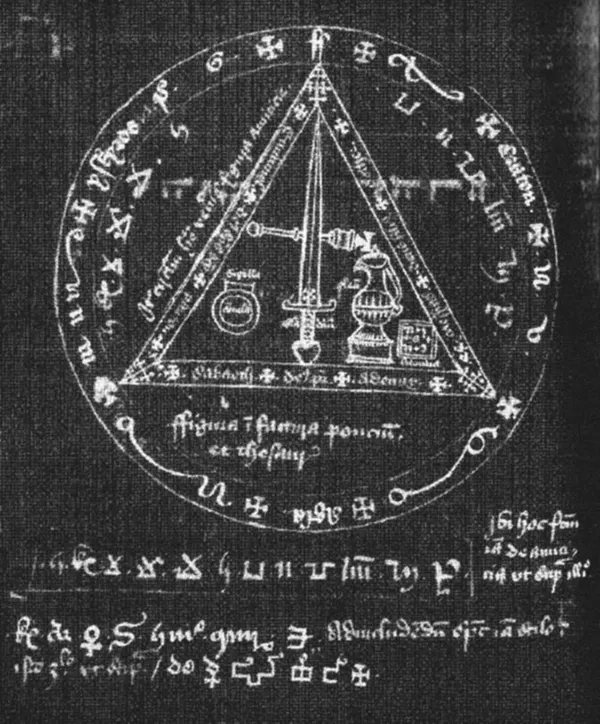Medieval Magic – A Service Industry Used By Rich And Poor Alike
AncientPages.com - Chances are that when you hear the words “medieval magic”, the image of a witch will spring to mind: wizened old crones huddled over a cauldron containing unspeakable ingredients such as eye of newt. Or you might think of people brutally prosecuted by overzealous priests. But this picture is inaccurate.
The Sorceress by John William Waterhouse. Credit: Public Domain
To begin with, fear of witchcraft – selling one’s soul to demons to inflict harm on others – was more of an early modern phenomenon than a medieval one, only beginning to take hold in Europe at the tail end of the 15th century. This vision also clouds from view the other magical practices in pre-modern England.
Magic is a universal phenomenon. Every society in every age has carried some system of belief and in every society there have been those who claim the ability to harness or manipulate the supernatural powers behind it. Even today, magic subtly pervades our lives – some of us have charms we wear to exams or interviews and others nod at lone magpies to ward off bad luck. Iceland has a government-recognised elf-whisperer, who claims the ability to see, speak to, and negotiate with the supernatural creatures still believed to live in Iceland’s landscape.
While today we might write this off as an overactive imagination or the stuff of fantasy, in the medieval period magic was widely accepted to be very real. A spell or charm could change a person’s life: sometimes for the worse, as with curses – but equally, if not more often, for the better.
See also:
Eugenio De Torralba – Renaissance Magician’s Dangerous Spirit Communications
Paracelsus: Physician, Alchemist, Philosopher Well Ahead Of His Time
Phurba Dagger: Magical Weapon That Restrains Evil And Harmful Occult Forces
Magic was understood to be capable of doing a range of things, from the marvellous to the surprisingly mundane. At the mundane end, magic spells were in many ways little more than a tool. They were used to find lost objects, inspire love, predict the future, heal illnesses and discover buried treasure. In this way, magic provided solutions to everyday problems, especially problems that could not be solved through other means.
Crime of conjuring
This all may sound far-fetched: magic was against the law – and surely most people would neither tolerate nor believe in it? The answer is no on both counts. Magic did not become a secular crime until the Act against Witchcraft and Conjurations in 1542. Before then it was only counted as a moral misdemeanour and was policed by the church. And, unless magic was used to cause harm – for example, attempted murder (see below) – the church was not especially concerned. Often it was simply treated as a form of superstition. As the church did not have the authority to mete out corporal punishments, magic was normally punished by fines or, in extreme cases, public penance and a stint in the pillory.
This might sound totalitarian today, but these punishments were far lighter than those wielded by secular courts, where maiming and execution were an option even for minor crimes. Magic, then, was placed low on the list of priorities for law enforcers, meaning that it could be practised relatively freely – if with a degree of caution.
Among the hundreds of cases of magic use preserved in England’s ecclesiastical court records, there are a number of testimonials claiming that the spells were effective. In 1375, the magician John Chestre boasted that he had recovered £15 for a man from “Garlickhithe” (an unknown location – possibly a street in outer London).
Magic circle, from a 15th-century manuscript. Kieckhefer, Richard (1989). Magic in the Middle Ages. Cambridge: Cambridge University Press.
Meanwhile Agnes Hancock claimed she could heal people by blessing their clothes or, if her patient was a child, consulting with fairies (she does not explain why fairies would be more inclined to help children). Though the courts disapproved – she was ordered to stop her spells or risk being charged with heresy, which was a capital offence – Agnes’ testimony shows that her patients were normally satisfied. As far as we know, she did not appear before the courts again.
Magic by royal patent
Young and old, rich and poor alike used magic. Far from being the preserve of the lower classes, it was commissioned by some very powerful people: sometimes even by the royal family. In a defamation case from 1390, Duke Edmund de Langley – the son of Edward III and uncle to Richard II – is recorded as having paid a magician to help him locate some stolen silver dishes.
Meanwhile, Alice Perrers – mistress to Edward III in the late 14th century – was widely rumoured to have employed a friar to cast love spells on the king. Though Alice was a divisive character, the use of love magic – like using it to find stolen goods – was probably not surprising. Eleanor Cobham, duchess of Gloucester, also famously employed a cunning woman to perform love magic in 1440-41, in this case, to help conceive a child. Eleanor’s use of magic got out of hand, however, when she was accused of also using it to plot Henry VI’s death.
In many ways magic was just a part of everyday life: perhaps not something that one would openly admit to using – after all, it was officially seen as immoral – but still treated as something of an open secret. A bit like drug use today, magic was common enough for people to know where to find it, and its use was silently recognised despite being frowned upon.
Magic became a secular crime in 1542. Credit: Public Domain
As for the people who sold magic – often termed as “cunning folk”, though I prefer “service magicians” – they treated their knowledge and skill as a commodity. They knew its value, understood their clients’ expectations and inhabited a marginal space between being tolerated out of necessity and shunned for what they sold.
As the medieval period faded into the early modern, belief in diabolical witchcraft grew and a stronger line was taken against magic – both by the courts and in contemporary culture. Its use remained widespread, though, and still survives in society today.
Written by Tabitha Stanmore - PhD Researcher, Early Modern Studies, Department of History, University of Bristol
This article is republished from The Conversation under a Creative Commons license. Read the original article.
More From Ancient Pages
-
 2,500-Year-Old Large Untouched Scythian Burial Ground Unearthed In Khakassia, Siberia
Archaeology | Oct 6, 2020
2,500-Year-Old Large Untouched Scythian Burial Ground Unearthed In Khakassia, Siberia
Archaeology | Oct 6, 2020 -
 Scientists Say Large Mammals Shaped The Evolution Of Humans – Here Is What Happened
Featured Stories | Jan 27, 2023
Scientists Say Large Mammals Shaped The Evolution Of Humans – Here Is What Happened
Featured Stories | Jan 27, 2023 -
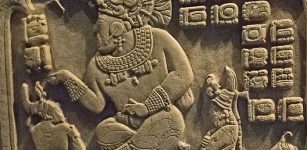 Fall Of The Ancient Maya Civilization Not Caused By Climate Change And Environmental Degradation – Scientists Say
Archaeology | Nov 18, 2021
Fall Of The Ancient Maya Civilization Not Caused By Climate Change And Environmental Degradation – Scientists Say
Archaeology | Nov 18, 2021 -
 Ancient Oral History Of Lake Babine First Nation Confirmed By Archaeologists
Archaeology | Jan 29, 2019
Ancient Oral History Of Lake Babine First Nation Confirmed By Archaeologists
Archaeology | Jan 29, 2019 -
 Extraordinary Viking Boat Burial Of Two People Unearthed In Central Norway
Archaeology | Nov 20, 2019
Extraordinary Viking Boat Burial Of Two People Unearthed In Central Norway
Archaeology | Nov 20, 2019 -
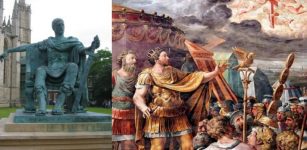 Constantine The Great – Did First Roman Christian Emperor Use Faith For His Own Agenda?
Featured Stories | Aug 8, 2018
Constantine The Great – Did First Roman Christian Emperor Use Faith For His Own Agenda?
Featured Stories | Aug 8, 2018 -
 Roman Tombs Unearthed In Egypt’s Dakhla Oasis
Archaeology | Jan 28, 2019
Roman Tombs Unearthed In Egypt’s Dakhla Oasis
Archaeology | Jan 28, 2019 -
 Nurarihyon: Powerful Demon Of Obscure Origin, Chief Of All Yokai
Featured Stories | Nov 6, 2024
Nurarihyon: Powerful Demon Of Obscure Origin, Chief Of All Yokai
Featured Stories | Nov 6, 2024 -
 ‘Throughout All Days And Nights, Forever’: Could An 11th-Century Contract Show Same-Sex Marriage In Medieval Spain?
Featured Stories | Aug 23, 2024
‘Throughout All Days And Nights, Forever’: Could An 11th-Century Contract Show Same-Sex Marriage In Medieval Spain?
Featured Stories | Aug 23, 2024 -
 New Species Of Stegosaur Is Oldest Discovered In Asia, And Possibly The World
Fossils | Mar 7, 2022
New Species Of Stegosaur Is Oldest Discovered In Asia, And Possibly The World
Fossils | Mar 7, 2022 -
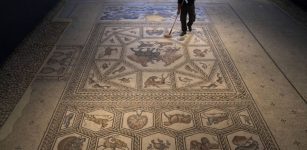 Exceptional 1,700-Year-Old Roman Mosaics Have Returned Home To Israel
Archaeology | Jun 27, 2022
Exceptional 1,700-Year-Old Roman Mosaics Have Returned Home To Israel
Archaeology | Jun 27, 2022 -
 Mysterious Ancient Rulers With Elongated Skulls – Who Were They Really?
Featured Stories | May 19, 2015
Mysterious Ancient Rulers With Elongated Skulls – Who Were They Really?
Featured Stories | May 19, 2015 -
 On This Day In History: Dryburgh Abbey One Of Most Beautiful Of All Border Abbeys Of Scotland Founded – On Nov 10, 1150
News | Nov 10, 2016
On This Day In History: Dryburgh Abbey One Of Most Beautiful Of All Border Abbeys Of Scotland Founded – On Nov 10, 1150
News | Nov 10, 2016 -
 Riddle Of An Ancient Underground City No-One Thinks Exist – Symbol For A Spiritual Quest – Part 2
Featured Stories | Sep 18, 2019
Riddle Of An Ancient Underground City No-One Thinks Exist – Symbol For A Spiritual Quest – Part 2
Featured Stories | Sep 18, 2019 -
 Hidden Prophecies Inside The Great Pyramid Of Giza Discovered By Scientists
Featured Stories | Jun 21, 2017
Hidden Prophecies Inside The Great Pyramid Of Giza Discovered By Scientists
Featured Stories | Jun 21, 2017 -
 Mystery Of Ivar The Boneless And Ímar – Remarkable Viking Puzzle Reveals Something Extraordinary
Featured Stories | Apr 24, 2023
Mystery Of Ivar The Boneless And Ímar – Remarkable Viking Puzzle Reveals Something Extraordinary
Featured Stories | Apr 24, 2023 -
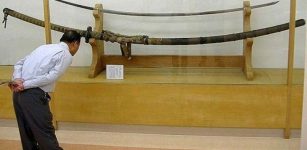 The Norimitsu Odachi – Giant Japanese Sword Remains An Enigma
Artifacts | Mar 22, 2019
The Norimitsu Odachi – Giant Japanese Sword Remains An Enigma
Artifacts | Mar 22, 2019 -
 Magnificent Etruscan Underground Burial With Beautiful Artifacts Discovered In Aleria-Lamajone, France
Archaeology | May 13, 2022
Magnificent Etruscan Underground Burial With Beautiful Artifacts Discovered In Aleria-Lamajone, France
Archaeology | May 13, 2022 -
 Swedenborg: Man Of Unaccountable Talents, Scholar, Great Intellect And His ‘Spiritual Awakening’
Featured Stories | Jun 28, 2018
Swedenborg: Man Of Unaccountable Talents, Scholar, Great Intellect And His ‘Spiritual Awakening’
Featured Stories | Jun 28, 2018 -
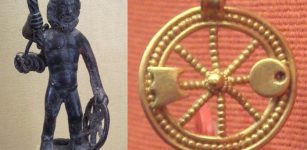 Taranis – Celtic God Of Wheel And Thunder Resembled Roman God Jupiter
Celtic Mythology | Jul 15, 2019
Taranis – Celtic God Of Wheel And Thunder Resembled Roman God Jupiter
Celtic Mythology | Jul 15, 2019


